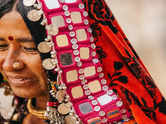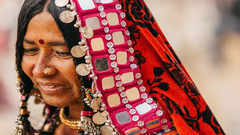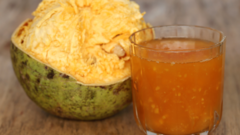01/6Eat millets and see the difference!

Packed with protein, fiber, B vitamins, and minerals like iron – millets are gluten-free superfoods that can help control diabetes. Gluten is a protein found in wheat, barley, rye and triticale. A gluten-free diet is claimed to improve health, weight loss and increase energy.
The Food and Agricultural Organisation (FAO) has declared 2023 as the “International Year of Millets”. Jowar (sorghum), bajra (pearl millet) and ragi (finger millet) are all types of millets. If you are also planning to introduce millets in your diet, here are some do's and don'ts of eating millets you should know.
02/6Ragi


Ragi is a heating millet which means it should ideally be consumed during the winter season. Ragi is full of calcium, protein, and amino acids. A good substitute for rice, it can be easily cooked into porridge.
If you are not used to eating millets, ragi is a light millet to introduce in your diet and then you can gradually start eating other millet varieties as well.
03/6Jowar


Jowar can be consumed throughout the year. It is full of protein, iron, fiber, and helps to keep the bad cholesterol away. Jowar can be used in replacing wheat rotis. Adding this gluten-free grain in your diet can help promote weight loss, control blood sugar levels, and enhance your gut and heart health.
Read more: Gluten-free breakfast recipes for people with celiac disease
04/6Bajra


Similar to ragi, bajra is also a heating millet and should ideally be consumed during winters. However, it can be mixed with cooling agents to prepare a summer drink. For example, bajra flour can be mixed with buttermilk for a refreshing summer drink. Similar to other millets, regularly eating bajra is associated with weight loss, improved diabetes management, as well as healthy hair, nails, and skin.
05/6Do’s and don’ts of eating millets


Do not immediately increase your millets consumption as it can lead to digestive issues. Introduce these in your diet gradually and soak the millets before using them in recipes to avoid any digestive troubles.
Soaking, sprouting or fermenting the millets before eating them is important, otherwise the phytic acid present in them could reduce the absorption of other nutrients.
People having hypothyroidism should avoid millet consumption as they contain goitrogens that may interfere with iodine absorption. Goitrogens content may be reduced in the cooking process, however, it does not get negated completely.
06/6Can you replace wheat with millets?


Jowar, bajra and ragi can be used to replace wheat in making wheat-based products like rotis, buns, biscuits and cakes. For best results, eat a variety of whole grains on different days, instead of sticking to only one form.
Read more: The side effects of alcohol on your body













































































































closecomments
SIGN IN WITH
GoogleEmail